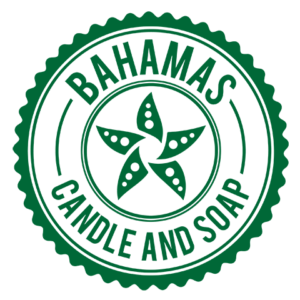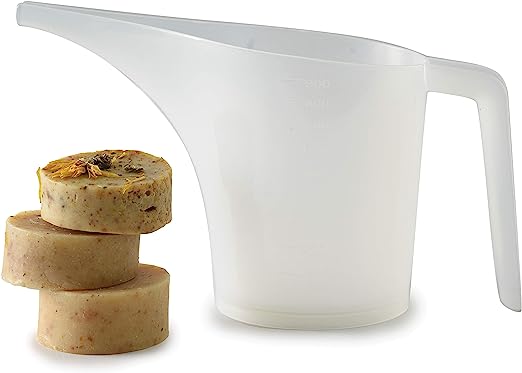When it comes to soap making, having a funnel pitcher is one of those tools you just need to make your job easier.
Unlike you soap batter mixing bowl the funnel pitcher is used in a few ways to help you utilize various soap making techniques.
Buy a funnel pitcher
3.5 cup Funnel Pitcher
- Capacity: 3. 5 cups/ 28 ounces/ 900 ml
- Pour liquids, sauces, purees, glazes, batters, frostings, dressing and gravies with no-drip precision.
- Translucent for quick and easy measuring. Easy to view contents.
- Fda and LFGB grade PP. Heat resistant to 320F/160C.
- Dishwasher safe.
Soap making Funnel pitcher – Review
| PRO | CON | |
|---|---|---|
| Price | under $10 | |
| Durability | heat resistant up to 320F | |
| Availability | Can be found in any kitchen store | |
| Usage | Will only be used for advanced soap making techniques. | |
| Cleaning | Easy to clean but more items to clean. |
The name brand of your funnel pitcher does not matter much. What you want to consider are a few of the pro points stated above.
What is the cost to purchase the funnel pitcher and how durable is it? In other words is it cheap or expensive and if either way how long will it last under constant usage?
I find that pretty much all funnel pitchers are made the same way with the same type of plastic and are fairy cheap, some cheaper than others.
As a matter of fact sometimes you can find multiple funnel pitchers for a good price. These are often much cheaper in bulk of 4 or more than one at a time however I have found that they do not last as long.
If you want to experiment with some new funnel techniques I suggest you get the multiple funnel packages.
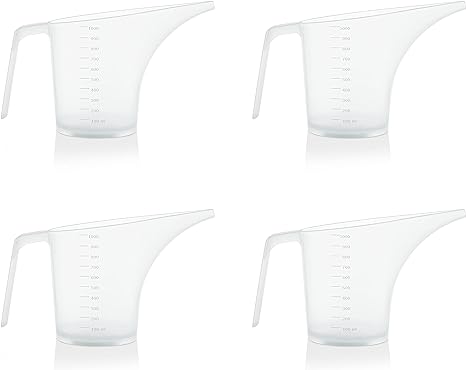
Funnel Pitcher 4 Cups, 32 Ounces – Set of 4
- Capacity: 4 cups/ 32 ounces/ 1000 ml
- Pour liquids, sauces, purees, glazes, batters, frostings, dressing and gravies with no-drip precision.
- Translucent for quick and easy measuring. Easy to view contents
How to use a funnel pitcher?
Soap making techniques like a funnel pour used in making swirls or even wood grain are easier to make if you have a pitcher with a long spout or funnel.
Mixing colors for your soap batter also becomes easier as you can mix separate colors in each pitcher to be used in your soap mold.
Having a fluid soap batter makes pouring a breeze with the long spout however it will give you more work to clean up when you are done.
Using and mixing multiple colors
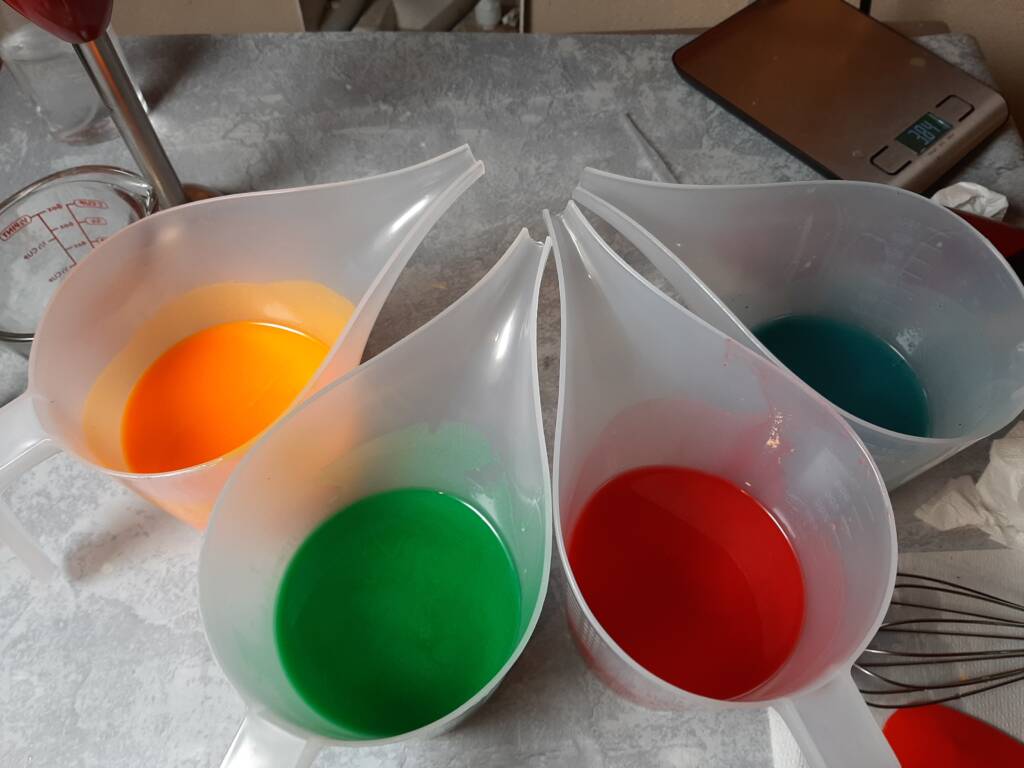
To mix your colors I find there are two ways to do it.
1 – mix your colors using funnel pitchers is to use your large mixing bowl to combine your oils and lye water to make your base soap batter.
Depending on the fragrance you will use if it does not accelerate trace you can add that into the mixing bowl as well. If it does accelerate trace you will have to add it to your separated colored batter prior to pouring it into the mold.
2 – Mix your batter to a either emulsification or a light trace depending on the technique you are going for
3 – Use a scale to measure the right amount of batter into each container.
4 – Add your colorant to the separated soap batter and mix with a whisk. ( a whisk is used first to incorporate the color without speeding up the saponification process – this comes later)
5 – add your fragrance at this point if acceleration is expected.
6 – When you are ready to pour, use the stick blender to ensure all the color and fragrance is blended well into the batter and you bring the batter to a light or medium trace depending on your technique.
7 – pour and work your soap making technique.
The funnel pitcher makes all this possible and easy to do. Trying this with round containers can become cumbersome because the pour can be thicker than you want.
With the funnel you can pour slow or fast to control how thick the pour will be for your soap technique.
Using multiple Oils
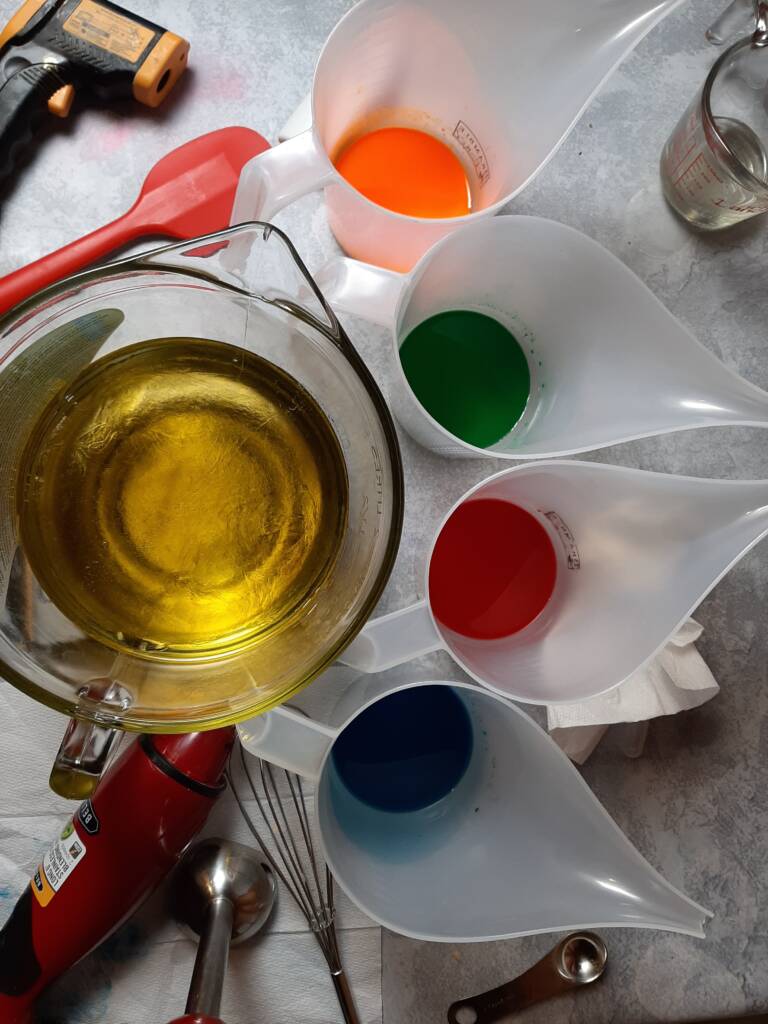
As your soap making skills become better you will want to experiment in making new soaps that require multiple oils.
A funnel pitcher comes in very handy in separating all the oils.
To do this is simple.
From your soap recipe measure out the amount of oil needed into each container.
This would typically look something like this for a soap recipe that requires 330z of oils.
| Oils/butter | Percentage | Amount (oz) |
|---|---|---|
| Olive Oil | 50% | 16.5oz |
| Coconut Oil | 20% | 6.6oz |
| Castor Oil | 5% | 1.65oz |
| Sweet Almond oil | 10% | 3.3oz |
| Shea Butter | 15% | 4.95oz |
The difficulty in separating your oils come mainly with oils such as castor oil that should be added up to 5%. This means you will have to measure out 1.65oz into a large container designed for 28-32oz.
This may not be practical. For myself I tend to combine smaller amounts together for example add the castor oil at 1.65oz then zero out the scale and add the sweet almond oil at 3.3oz being careful not to go over the allotted amount.
Final thoughts
Using funnel pitchers in soap making has its pros and cons but far more pros than cons to consider.
Having them on hand will come in very handy in more ways than you may think such as melting butters before adding to your base oils in your mixing bowl.
You will not regret purchasing a few funnel pitchers as there is always some way you will use them.
Recent Posts
Best Practices for Using, Storing, and Keeping Soap Molds for a Long Time
Soap making can be a rewarding and creative pursuit, allowing artisans to craft unique products while exploring their artistic side. One of the most critical components of this process is the soap...
Recommended Soap Molds Soap making can be an exciting hobby or even a profitable business but you wont get very far if you make a batch of soap and have no way to shape and mold it. This is where...
